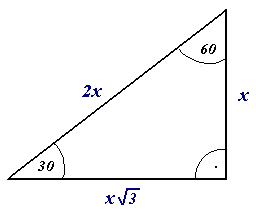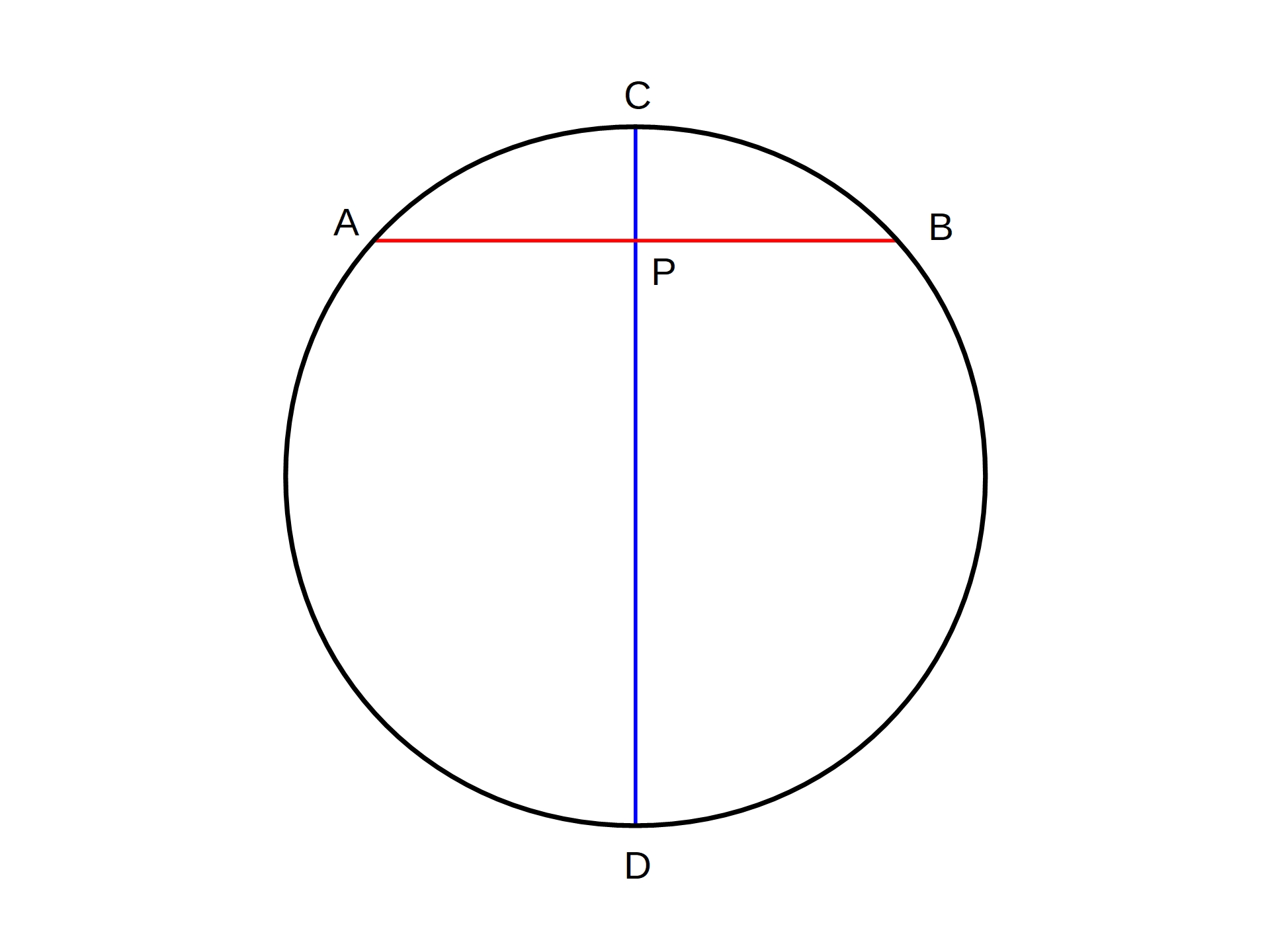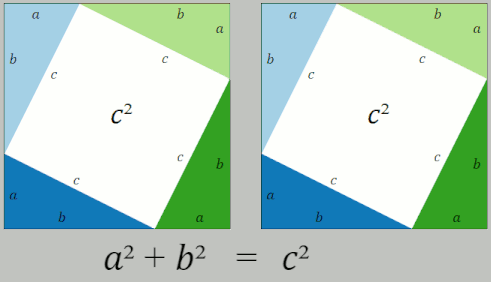|
Semicircle
In mathematics (and more specifically geometry), a semicircle is a one-dimensional locus of points that forms half of a circle. It is a circular arc that measures 180° (equivalently, radians, or a half-turn). It only has one line of symmetry (reflection symmetry). In non-technical usage, the term "semicircle" is sometimes used to refer to either a closed curve that also includes the diameter segment from one end of the arc to the other or to the half- disk, which is a two-dimensional geometric region that further includes all the interior points. By Thales' theorem, any triangle inscribed in a semicircle with a vertex at each of the endpoints of the semicircle and the third vertex elsewhere on the semicircle is a right triangle, with a right angle at the third vertex. All lines intersecting the semicircle perpendicularly are concurrent at the center of the circle containing the given semicircle. Arithmetic and geometric means A semicircle can be used to construct th ... [...More Info...] [...Related Items...] OR: [Wikipedia] [Google] [Baidu] |
Right Angle
In geometry and trigonometry, a right angle is an angle of exactly 90 Degree (angle), degrees or radians corresponding to a quarter turn (geometry), turn. If a Line (mathematics)#Ray, ray is placed so that its endpoint is on a line and the adjacent angles are equal, then they are right angles. The term is a calque of Latin ''angulus rectus''; here ''rectus'' means "upright", referring to the vertical perpendicular to a horizontal base line. Closely related and important geometrical concepts are perpendicular lines, meaning lines that form right angles at their point of intersection, and orthogonality, which is the property of forming right angles, usually applied to Euclidean vector, vectors. The presence of a right angle in a triangle is the defining factor for right triangles, making the right angle basic to trigonometry. Etymology The meaning of ''right'' in ''right angle'' possibly refers to the Classical Latin, Latin adjective ''rectus'' 'erect, straight, upright, perp ... [...More Info...] [...Related Items...] OR: [Wikipedia] [Google] [Baidu] |
Circle
A circle is a shape consisting of all point (geometry), points in a plane (mathematics), plane that are at a given distance from a given point, the Centre (geometry), centre. The distance between any point of the circle and the centre is called the radius. The length of a line segment connecting two points on the circle and passing through the centre is called the diameter. A circle bounds a region of the plane called a Disk (mathematics), disc. The circle has been known since before the beginning of recorded history. Natural circles are common, such as the full moon or a slice of round fruit. The circle is the basis for the wheel, which, with related inventions such as gears, makes much of modern machinery possible. In mathematics, the study of the circle has helped inspire the development of geometry, astronomy and calculus. Terminology * Annulus (mathematics), Annulus: a ring-shaped object, the region bounded by two concentric circles. * Circular arc, Arc: any Connected ... [...More Info...] [...Related Items...] OR: [Wikipedia] [Google] [Baidu] |
Thales' Theorem
In geometry, Thales's theorem states that if , , and are distinct points on a circle where the line is a diameter, the angle is a right angle. Thales's theorem is a special case of the inscribed angle theorem and is mentioned and proved as part of the 31st proposition in the third book of Euclid's ''Euclid's Elements, Elements''. It is generally attributed to Thales of Miletus, but it is sometimes attributed to Pythagoras. History Babylonian mathematics, Babylonian mathematicians knew this for special cases before Greek mathematicians proved it. Thales of Miletus (early 6th century BC) is traditionally credited with proving the theorem; however, even by the 5th century BC there was nothing extant of Thales' writing, and inventions and ideas were attributed to men of wisdom such as Thales and Pythagoras by later doxography, doxographers based on hearsay and speculation. Reference to Thales was made by Proclus (5th century AD), and by Diogenes Laërtius (3rd century AD) docum ... [...More Info...] [...Related Items...] OR: [Wikipedia] [Google] [Baidu] |
Right Triangle
A right triangle or right-angled triangle, sometimes called an orthogonal triangle or rectangular triangle, is a triangle in which two sides are perpendicular, forming a right angle ( turn or 90 degrees). The side opposite to the right angle is called the '' hypotenuse'' (side c in the figure). The sides adjacent to the right angle are called ''legs'' (or ''catheti'', singular: '' cathetus''). Side a may be identified as the side ''adjacent'' to angle B and ''opposite'' (or ''opposed to'') angle A, while side b is the side adjacent to angle A and opposite angle B. Every right triangle is half of a rectangle which has been divided along its diagonal. When the rectangle is a square, its right-triangular half is isosceles, with two congruent sides and two congruent angles. When the rectangle is not a square, its right-triangular half is scalene. Every triangle whose base is the diameter of a circle and whose apex lies on the circle is a right triangle, with the right angle at ... [...More Info...] [...Related Items...] OR: [Wikipedia] [Google] [Baidu] |
Circular Arc
A circular arc is the arc of a circle between a pair of distinct points. If the two points are not directly opposite each other, one of these arcs, the minor arc, subtends an angle at the center of the circle that is less than radians (180 degrees); and the other arc, the major arc, subtends an angle greater than radians. The arc of a circle is defined as the part or segment of the circumference of a circle. A straight line that connects the two ends of the arc is known as a '' chord'' of a circle. If the length of an arc is exactly half of the circle, it is known as a '' semicircular arc''. Length The length (more precisely, arc length) of an arc of a circle with radius ''r'' and subtending an angle ''θ'' (measured in radians) with the circle center — i.e., the central angle — is : L = \theta r. This is because :\frac=\frac. Substituting in the circumference :\frac=\frac, and, with ''α'' being the same angle measured in degrees, since ''θ'' = , the ... [...More Info...] [...Related Items...] OR: [Wikipedia] [Google] [Baidu] |
Pythagorean Theorem
In mathematics, the Pythagorean theorem or Pythagoras' theorem is a fundamental relation in Euclidean geometry between the three sides of a right triangle. It states that the area of the square whose side is the hypotenuse (the side opposite the right angle) is equal to the sum of the areas of the squares on the other two sides. The theorem can be written as an equation relating the lengths of the sides , and the hypotenuse , sometimes called the Pythagorean equation: :a^2 + b^2 = c^2 . The theorem is named for the Ancient Greece, Greek philosopher Pythagoras, born around 570 BC. The theorem has been Mathematical proof, proved numerous times by many different methods – possibly the most for any mathematical theorem. The proofs are diverse, including both Geometry, geometric proofs and Algebra, algebraic proofs, with some dating back thousands of years. When Euclidean space is represented by a Cartesian coordinate system in analytic geometry, Euclidean distance satisfies th ... [...More Info...] [...Related Items...] OR: [Wikipedia] [Google] [Baidu] |
Arithmetic Mean
In mathematics and statistics, the arithmetic mean ( ), arithmetic average, or just the ''mean'' or ''average'' is the sum of a collection of numbers divided by the count of numbers in the collection. The collection is often a set of results from an experiment, an observational study, or a Survey (statistics), survey. The term "arithmetic mean" is preferred in some contexts in mathematics and statistics because it helps to distinguish it from other types of means, such as geometric mean, geometric and harmonic mean, harmonic. Arithmetic means are also frequently used in economics, anthropology, history, and almost every other academic field to some extent. For example, per capita income is the arithmetic average of the income of a nation's Human population, population. While the arithmetic mean is often used to report central tendency, central tendencies, it is not a robust statistic: it is greatly influenced by outliers (Value (mathematics), values much larger or smaller than ... [...More Info...] [...Related Items...] OR: [Wikipedia] [Google] [Baidu] |
Geometric Mean
In mathematics, the geometric mean is a mean or average which indicates a central tendency of a finite collection of positive real numbers by using the product of their values (as opposed to the arithmetic mean which uses their sum). The geometric mean of numbers is the Nth root, th root of their product (mathematics), product, i.e., for a collection of numbers , the geometric mean is defined as : \sqrt[n]. When the collection of numbers and their geometric mean are plotted in logarithmic scale, the geometric mean is transformed into an arithmetic mean, so the geometric mean can equivalently be calculated by taking the natural logarithm of each number, finding the arithmetic mean of the logarithms, and then returning the result to linear scale using the exponential function , :\sqrt[n] = \exp \left( \frac \right). The geometric mean of two numbers is the square root of their product, for example with numbers and the geometric mean is \textstyle \sqrt = The geometric mean o ... [...More Info...] [...Related Items...] OR: [Wikipedia] [Google] [Baidu] |
Radius
In classical geometry, a radius (: radii or radiuses) of a circle or sphere is any of the line segments from its Centre (geometry), center to its perimeter, and in more modern usage, it is also their length. The radius of a regular polygon is the line segment or distance from its center to any of its Vertex (geometry), vertices. The name comes from the Latin ''radius'', meaning ray but also the spoke of a chariot wheel.Definition of Radius at dictionary.reference.com. Accessed on 2009-08-08. The typical abbreviation and mathematical symbol for radius is ''R'' or ''r''. By extension, the diameter ''D'' is defined as twice the radius:Definition of radius at mathwords.com. ... [...More Info...] [...Related Items...] OR: [Wikipedia] [Google] [Baidu] |
Lemma (mathematics)
In mathematics and other fields, a lemma (: lemmas or lemmata) is a generally minor, proven Theorem#Terminology, proposition which is used to prove a larger statement. For that reason, it is also known as a "helping theorem" or an "auxiliary theorem". In many cases, a lemma derives its importance from the theorem it aims to mathematical proof, prove; however, a lemma can also turn out to be more important than originally thought. Etymology From the Ancient Greek λῆμμα, (perfect passive εἴλημμαι) something received or taken. Thus something taken for granted in an argument. Comparison with theorem There is no formal distinction between a lemma and a theorem, only one of intention (see Theorem#Terminology, Theorem terminology). However, a lemma can be considered a minor result whose sole purpose is to help prove a more substantial theorem – a step in the direction of proof. Well-known lemmas Some powerful results in mathematics are known as lemmas, first named for ... [...More Info...] [...Related Items...] OR: [Wikipedia] [Google] [Baidu] |
Quadrature (geometry)
In mathematics, quadrature is a historic term for the computation of area (mathematics), areas and is thus used for computation of integrals. The word is derived from the Latin ''quadratus'' meaning "square". The reason is that, for Ancient Greek mathematicians, the computation of an area consisted of constructing a square of the same area. In this sense, the modern term is squaring. For example, the quadrature of the circle, (or squaring the circle) is a famous old problem that has been shown, in the 19th century, to be impossible with the methods available to the Ancient Greeks, Integral calculus, introduced in the 17th century, is a general method for computation of areas. ''Quadrature'' came to refer to the computation of any integral; such a computation is presently called more often "integral" or "integration". However, the computation of solutions of differential equations and differential systems is also called ''integration'', and ''quadrature'' remains useful for dist ... [...More Info...] [...Related Items...] OR: [Wikipedia] [Google] [Baidu] |
Quadrature Of Rectangle
Quadrature may refer to: Mathematics * Quadrature (geometry), drawing a square with the same area as a given plane figure (''squaring'') or computing that area ** Quadrature of the circle ** ''Quadrature of the Parabola'' ** Quadrature of the hyperbola * Numerical integration is often called "numerical quadrature" or simply "quadrature" ** Gaussian quadrature, a special case of numerical integration * Quadrature (differential equations), expressing a differential equation solution in terms of integrals. * Formerly, a synonym for "integral" ** Integral ** Antiderivative Signal processing * Addition in quadrature, combining the magnitude of uncorrelated signals by taking the square root of the sum of their squares *Quadrature phase, oscillations that are said to be ''in quadrature'' if they are separated in phase by 90° (/2, or /4) *Quadrature component of a composite signal * Quadrature filter, the analytic signal of a real-valued filter *Quadrature amplitude modulation (Q ... [...More Info...] [...Related Items...] OR: [Wikipedia] [Google] [Baidu] |





